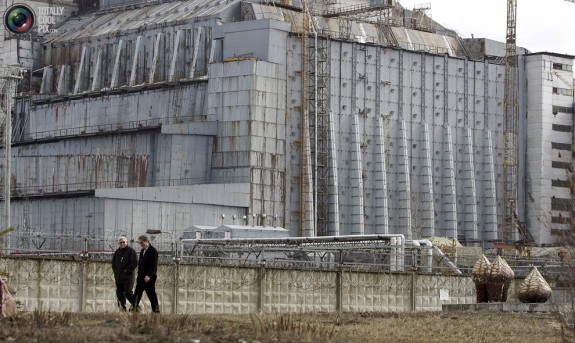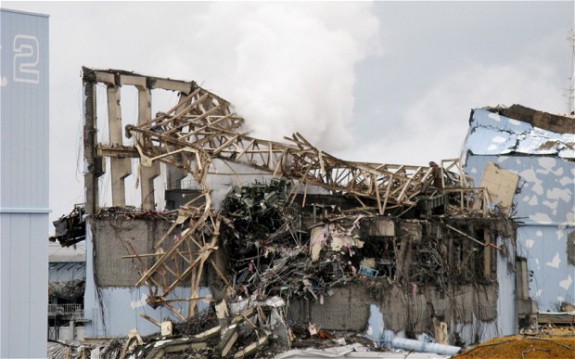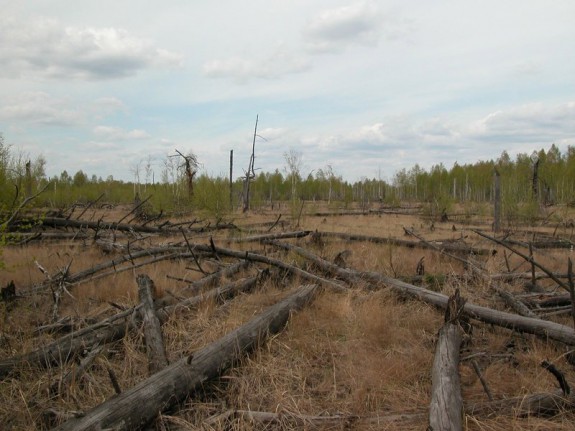
Looking like the most horrible prison imaginable, this image of the fourth reactor at Chernobyl serves as a reminder of one disaster while people wait and debate the immediate and potential long term impact of Fukshima. Currently, an object lesson in the potential threat rears its ugly head in Chernobyl.
From an article on Smithsonian.Org
Forests Around Chernobyl Aren’t Decaying Properly
by Rachel Nuwer posted on March 15, 2014Nearly 30 years have passed since the Chernobyl plant exploded and caused an unprecedented nuclear disaster. The effects of that catastrophe, however, are still felt today. Although no people live in the extensive exclusion zones around the epicenter, animals and plants still show signs of radiation poisoning.
Birds around Chernobyl have significantly smaller brains that those living in non-radiation poisoned areas; trees there grow slower; and fewer spiders and insects—including bees, butterflies and grasshoppers—live there. Additionally, game animals such as wild boar caught outside of the exclusion zone—including some bagged as far away as Germany—continue to show abnormal and dangerous levels of radiation.
However, there are even more fundamental issues going on in the environment. According to a new study published in Oecologia, decomposers—organisms such as microbes, fungi and some types of insects that drive the process of decay—have also suffered from the contamination. These creatures are responsible for an essential component of any ecosystem: recycling organic matter back into the soil. Issues with such a basic-level process, the authors of the study think, could have compounding effects for the entire ecosystem.
The team decided to investigate this question in part because of a peculiar field observation. “We have conducted research in Chernobyl since 1991 and have noticed a significant accumulation of litter over time,” the write. Moreover, trees in the infamous Red Forest—an area where all of the pine trees turned a reddish color and then died shortly after the accident—did not seem to be decaying, even 15 to 20 years after the meltdown.
“Apart from a few ants, the dead tree trunks were largely unscathed when we first encountered them,” says Timothy Mousseau, a biologist at the University of South Carolina, Columbia, and lead author of the study. “It was striking, given that in the forests where I live, a fallen tree is mostly sawdust after a decade of lying on the ground.”
Chernobyl was a fixed event, without the distributive power of the ocean currents or the continued output of covered up water leaks, and yet it still poses a threat.
Other studies have found that the Chernobyl area is at risk of fire, and 27 years’ worth of leaf litter, Mousseau and his colleagues think, would likely make a good fuel source for such a forest fire. This poses a more worrying problem than just environmental destruction: Fires can potentially redistribute radioactive contaminants to places outside of the exclusion zone, Mousseau says. “There is growing concern that there could be a catastrophic fire in the coming years,” he says.
Yes, that image of Chernobyl does look like a prison, but only symbolically. The real prisoners of our quest for more and greater sources of energy are ourselves, and there are no walls for containment any more.

Follow us on FaceBook for updates and more.





